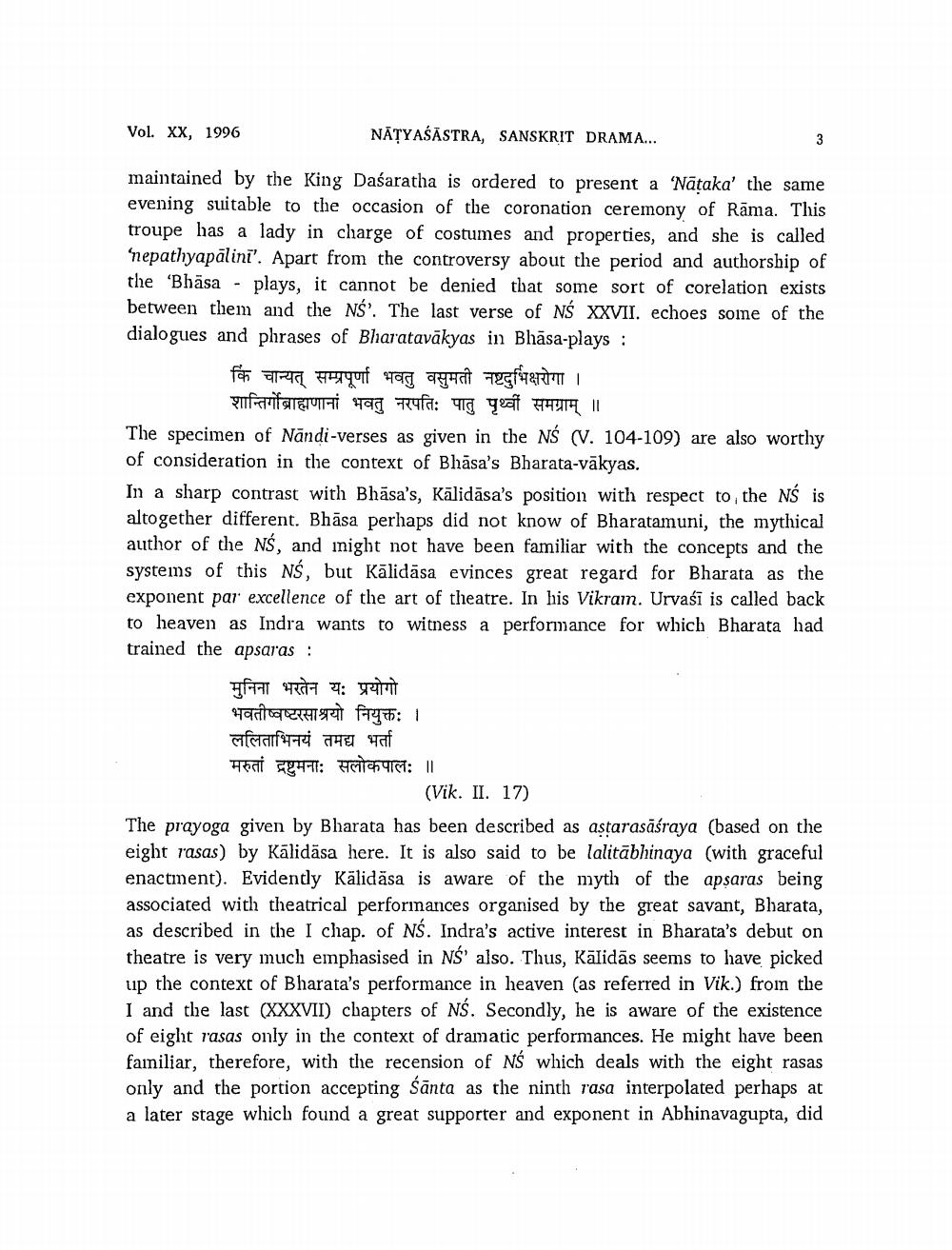________________
Vol. XX, 1996
NĀTYAŚĀSTRA, SANSKRIT DRAMA...
maintained by the King Dasaratha is ordered to present a 'Nataka' the same evening suitable to the occasion of the coronation ceremony of Rāma. This troupe has a lady in charge of costumes and properties, and she is called nepathyapālini'. Apart from the controversy about the period and authorship of the 'Bhāsa - plays, it cannot be denied that some sort of corelation exists between them and the NŚ'. The last verse of NŚ XXVII. echoes some of the dialogues and phrases of Bharatavākyas in Bhāsa-plays :
किं चान्यत् सम्पपूर्णा भवतु वसुमती नष्टदुर्भिक्षरोगा ।
शान्तिर्गोब्राह्मणानां भवतु नरपतिः पातु पृथ्वीं समग्राम् ॥ The specimen of Nāndi-verses as given in the NŚ (V. 104-109) are also worthy of consideration in the context of Bhāsa's Bharata-vākyas. In a sharp contrast with Bhāsa's, Kālidāsa's position with respect to the NS is altogether different. Bhāsa perhaps did not know of Bharatamuni, the mythical author of the Nś, and inight not have been familiar with the concepts and the systems of this NŚ, but Kalidāsa evinces great regard for Bharata as the exponent par excellence of the art of theatre. In his Vikramn. Urvaśī is called back to heaven as Indra wants to witness a performance for which Bharata had trained the apsaras :
मुनिना भरतेन यः प्रयोगो भवतीष्वष्टरसाश्रयो नियुक्तः । ललिताभिनयं तमद्य भर्ता मरुतां द्रष्टुमनाः सलोकपालः ॥
(Vik. II. 17) The prayoga given by Bharata has been described as astarasāśraya (based on the eight rasas) by Kalidāsa here. It is also said to be lalitābhinaya (with graceful enactment). Evidently Kālidāsa is aware of the myth of the apsaras being associated with theatrical performances organised by the great savant, Bharata, as described in the I chap. of Nś. Indra's active interest in Bharata's debut on theatre is very much emphasised in Nś' also. Thus, Kālidās seems to have picked up the context of Bharata's performance in heaven (as referred in Vik.) from the I and the last (XXXVII) chapters of Nś. Secondly, he is aware of the existence of eight rasas only in the context of dramatic performances. He might have been fainiliar, therefore, with the recension of Nś which deals with the eight rasas only and the portion accepting Santa as the ninth rasa interpolated perhaps at a later stage which found a great supporter and exponent in Abhinavagupta, did




